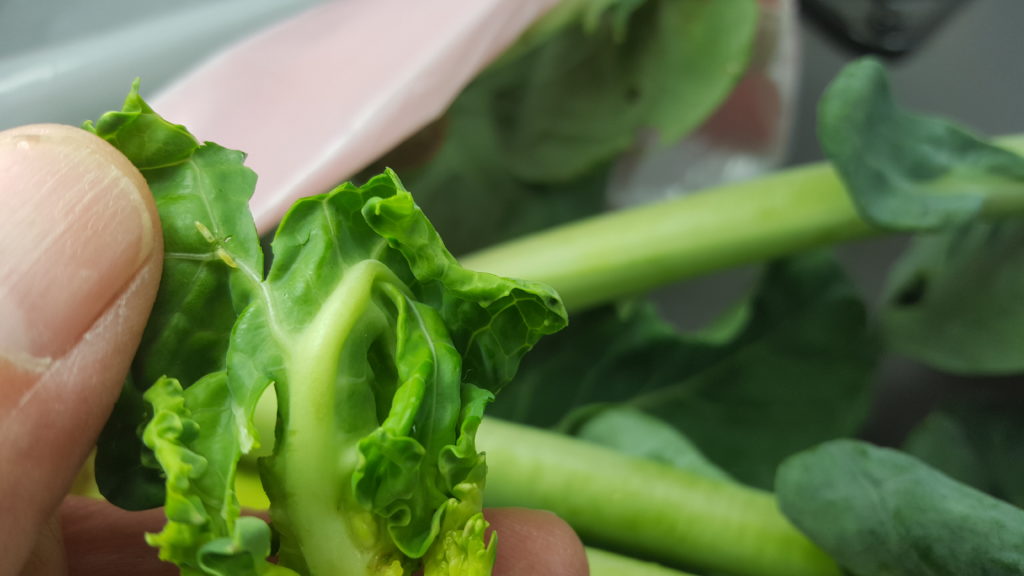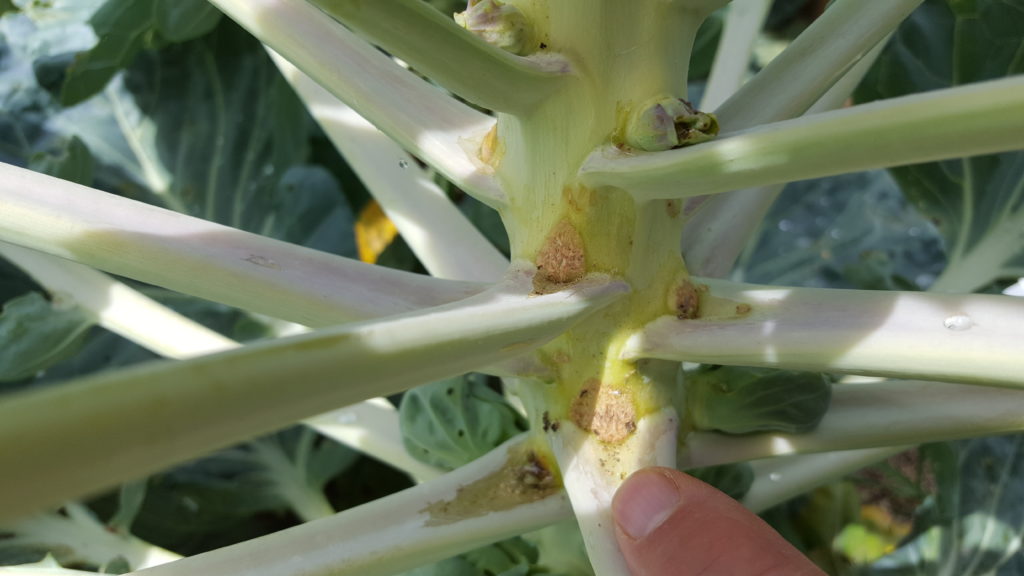There’s a new threat to cruciferous crops in Maine

State and University of Maine officials are warning farmers and gardeners to be on the lookout for a new and potentially significant threat to cruciferous vegetables. For the first time since it was found in North American, the Swede midge (Contarinia nasturtii) has been confirmed in Maine.
“This is a new insect to the state,” said David Fuller, agriculture and non-timber forest products professional with the University of Maine Cooperative Extension. “It can cause so much damage to crops it renders them unsellable.”
It’s the tiny larvae of the midge that is the danger, Fuller said. Less than one-sixteenth of an inch in length, the voracious insects feed on cruciferous plants including broccoli, cabbage and cauliflower in addition to plants of the genus Brassica in the mustard family like kale and kohlrabi.
The larvae feed on the growing tips and leaves of the plants, disfiguring them or preventing head formation. Neither the larvae nor the adult midges pose any danger to humans or livestock.
The midge was found after University of Maine Cooperative Extension entomologists received reports in August of broccoli damage in Franklin and Aroostook Counties, according to Fuller. When the plants were inspected, the entomologists discovered the small, maggot-like larvae.
Within a week the scientists had set out pheromone traps for the adult make Swed midges and collected numerous specimens of the pest. The specimens were turned over to officials at the Maine Department of Agriculture, Conservation and Forestry who, in turn, sent them to officials at the United States Department of Agriculture. Those federal officials confirmed the samples were Swede midges.
According to Fuller, there is no way to know how the pest got to Maine, as they are not strong flyers, but now that they are here, farmers and gardeners are facing a challenge that can last the entire growing season.
According to the Maine Department of Agriculture, Conservation and Forestry, the Swede midge is native to Europe and southwest Asia. The first North American find was in Ontario, Canada, in 2000. It was subsequently found in Niagara County, New York, in 2004. It’s been on the move ever since and Maine is the last of the six New England states to report swede midge.

“The adult female Swede midge lays her eggs in May on the upper growth points of a plant,” Fuller said. “Once hatched, the larvae eat those tips of leaves or tops of the plant and plants like broccoli don’t even have a chance to produce heads.”
In the case of cauliflower, the damage is to the terminal heads which become scarred and very deformed.
The Swede midge produces three to four overlapping generations per season from May to September, Fuller said. There is no major hatch and die-off of the insect, he said. Once established, they are present in steady numbers all season.
“We have no experience managing this bug in Maine,” Fuller said. “For now we are directing people to consult the Swede Midge Information Center for the US at Cornell University.”
Cornell’s online site has information on how to identify signs of the pest and how to best prevent an infestation or how to deal with one.
Among those recommendations are using clean transplants, practicing a two to three year rotation cycle for cruciferous crops, continual monitoring for Swede midges, and application of insecticides.
Management and control of the Swede midge can be particularly difficult for organic growers who do not use chemical insecticides or pesticides. Even using chemicals does not always do the trick, Fuller said, as the larvae can move down into tight spaces between leaves where chemicals do not always reach.
Now that the midge is in Maine, Fuller said he and his colleagues are in a full-court press to learn as much as they can as fast as they can to help the state’s growers. He is asking broccoli growers, in particular, to contact their closest extension office if they notice heads are not forming on the fall crop.
“This winter will be spent studying the Swede midge,” Fuller said. “The learning curve will be fast and furious.”
